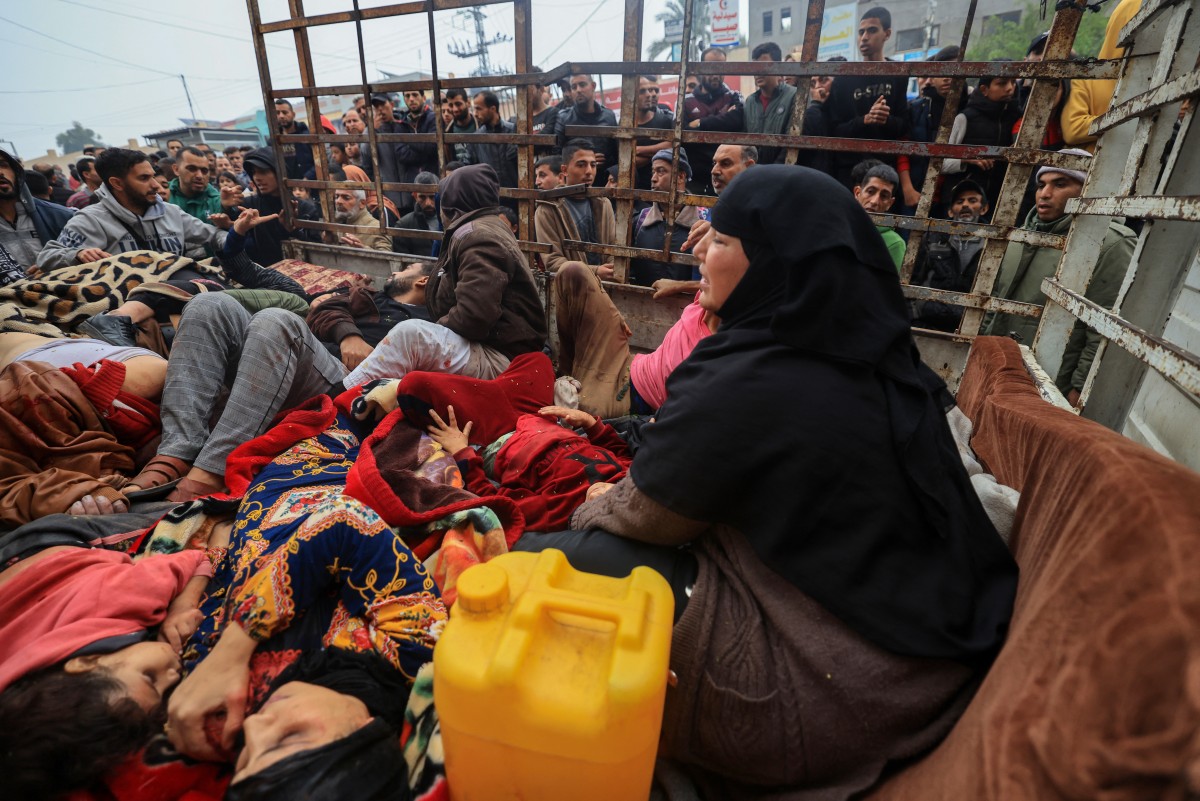Geneva, Switzerland – The situation in the Gaza Strip is getting worse all the time and approaching humanity’s “darkest hour”, the World Health Organization said Tuesday.
More than 15,900 Palestinians have been killed in the heaviest Israeli bombardment and ground invasion of the tiny enclave.
Here are some of the key concerns being raised by the WHO and other United Nations agencies:
Situation in southern Gaza
Richard Peeperkorn, the WHO’s representative in the occupied Palestinian territories, told reporters in Geneva Tuesday, via video link from Rafah in the southern Gaza Strip, that the number of people on the move from central and southern Gaza was “vastly increasing”.
Israeli forces battled Hamas in southern Gaza on Tuesday, with fighting pushing civilians into a steadily shrinking area of the besieged Palestinian enclave.
After initially focusing on northern Gaza, the Israeli army has now sent ground forces into the south and asked civilians to evacuate.
“The situation is getting worse by the hour. There is intensified bombing going on all around, including here in the southern areas,” said Peeperkorn.
“A lot of people are desperate and almost in a permanent state of shock”.
“We are close by humanity’s darkest hour,” Peeperkorn said.
“These bombings and the senseless loss of life must stop now, and we need a sustained ceasefire.”
WHO warehouses
Early in the conflict, the WHO established two adjacent warehouses in Khan Yunis in southern Gaza but said Tuesday it had to find a smaller one in Rafah after being advised to move by Israel’s military.
“We comply because we want to make sure that you can actually deliver essential medical supplies,” said Peeperkorn.
The WHO managed to scramble out 90 percent of the stockpile in “a panic movement”.
“And we had to abort the mission we were planning to do to bring supplies to the hospitals.
“This… should be our top priority, to get a sustained line of the most essential medical supplies, trauma supplies, essential drugs into Gaza,” and then distribute it to health facilities.
He said the amount of aid that the WHO had been able to bring into Gaza was “way too little”.
“For this kind of humanitarian disaster, where we are in an increasing disaster, we need much more supplies and equipment in,” he said.
Beds and diseases
Eighteen of the Gaza Strip’s 36 hospitals are still functioning in any capacity: three are providing basic first aid only, while the rest are delivering partial services. Twelve of the 18 are in the south.
There are 1,400 hospital beds still available in the Gaza Strip. The WHO says 5,000 are needed.
Peeperkorn said that since the start of the war, there had been 120,000 acute respiratory infections; close to 26,000 people with scabies and lice; 86,000 cases of diarrhea, including 44,000 among children aged under five, which he said was 20 to 30 times higher than could be expected.
Meanwhile some 1,150 cases of jaundice have been recorded, along with cases of chicken pox, skin rashes and meningitis.
Safe zones and sanitation
James Elder, spokesman for the UN children’s agency UNICEF, said that with the population on the move, in two hours “there are 5,000 people where there was no-one previously. Critically in these places, there’s no sanitation.”
Speaking from Cairo after returning from Gaza, he said that in one shelter in Gaza, where 30,000 people were seeking refuge, there was one toilet for roughly every 400 people, meaning queues of up to five hours.
Israel directing civilians towards zones it has designated as safe — but which have no toilets or clean water — is creating “the perfect storm for disease outbreak”, said Elder.
“Israel is the occupying power: it’s they who have to provide food, water, medicine,” he added.

